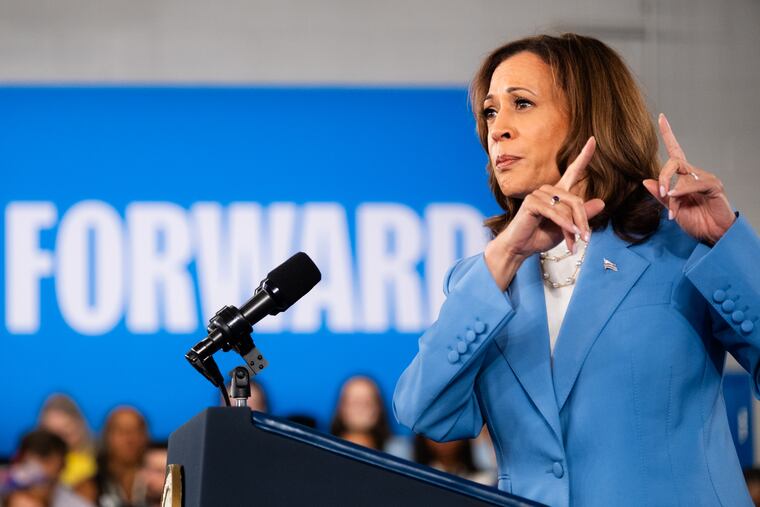Harris proposes a (mostly) solid plan to boost the U.S. economy
Housing is at the top of the list of costs Vice President Kamala Harris is targeting.

Vice President Kamala Harris has unveiled the economic agenda she plans to enact if she becomes the next president. I have a couple bones to pick with it, but I’m generally a fan.
The Harris agenda has been criticized as opaque and light on policy — with no there there. Not so. Her economic proposals are in addition to the wide-ranging tax and government spending policies included in the Biden-Harris administration’s fiscal year 2025 budget. There are hundreds of line items in that budget, each costed out year by year over the 10-year budget horizon. Her economic policies are an open book, and they are comprehensive.
This means economic policies that became law under President Joe Biden to increase infrastructure investment, incentivize semiconductor chip production and R&D in the U.S., and facilitate the transition to clean energy will be fully implemented.
While the Harris economic agenda is in line with that of the Biden-Harris administration, she is framing it with a sharp focus on how the plan will lower the cost of living for low- and middle-income American families. Nothing is more upsetting to many voters than the jump in living costs during the pandemic.
Housing is at the top of the list of costs she is targeting — with good reason. Housing is the largest cost for most families, and the nation is suffering a housing affordability crisis that’s been long in the making. Nearly half of the nation’s renters — a record number — are shelling out close to one-third of their incomes on rent. And with house prices and mortgage rates up a lot since the start of the pandemic, the monthly mortgage payment for a typical homebuyer has more than doubled.
Harris rightly wants to increase housing supply. She does this with sizable tax breaks for homebuilders who put up starter homes and multifamily developers who build rental units for low-income families. There is also a tax break to incentivize the renovation of older homes in struggling neighborhoods. As more homes are built and rehabbed, this will weigh on house prices and rents and lift housing affordability.
Here is one of my bones to pick: Harris is also proposing to significantly expand down payment assistance and provide a tax break to those purchasing a first home. While well-intentioned, this will fire up demand. If there are few homes for sale, the proposal will result in higher house prices with potential buyers no closer to being able to buy a home. Much better to wait until there is a lot more housing supply before providing financial support for housing demand.
I will also pick a bone with Harris’ proposal to penalize so-called price gouging in the grocery and food-processing industries. The proposal assumes that greedy businesses took advantage of pandemic shortages to jack up their prices and meaningfully contributed to the high cost of food and high inflation more broadly.
This explanation seems to resonate with many voters, but there’s little evidence to suggest that it contributes meaningfully to today’s higher prices. Indeed, grocery prices have been more or less flat for nearly two years. The federal government should work to ensure that markets are competitive and shine a spotlight on uncompetitive pricing practices, but price caps or controls would be counterproductive.
Low- and middle-income Americans will also receive a big boost to their purchasing power from Harris’ proposal to significantly expand the earned income tax credit and child tax credit. The EITC has historically been popular among Democrats and Republicans for helping low-wage workers but still incentivizing work. And the CTC appears to be gaining broader political support because it significantly defrays the cost of having children.
These proposals aren’t cheap, but Harris plans to pay for them and then some through higher taxes on high-income and wealthy households and corporations. Under current law, the tax cuts provided in President Donald Trump’s first term expire at the end of 2025. Harris would permanently extend those cuts for those making less than $400,000 a year, but they would expire for those making over that. She would also partially roll back the large tax cuts corporations got from Trump.
Putting forward an economic agenda is daunting for presidential candidates. The agenda must balance the policy vision of the candidate with sensitivity to the political impact of those policies. Politically vulnerable parts of the agenda will be cherry-picked and politicized, threatening consideration of the overall merits. But adding up all its parts, it is safe to say that the Kamala Harris economic agenda will help ensure the economy continues to enjoy solid growth with low unemployment and more affordable living costs for low- and middle-income Americans.